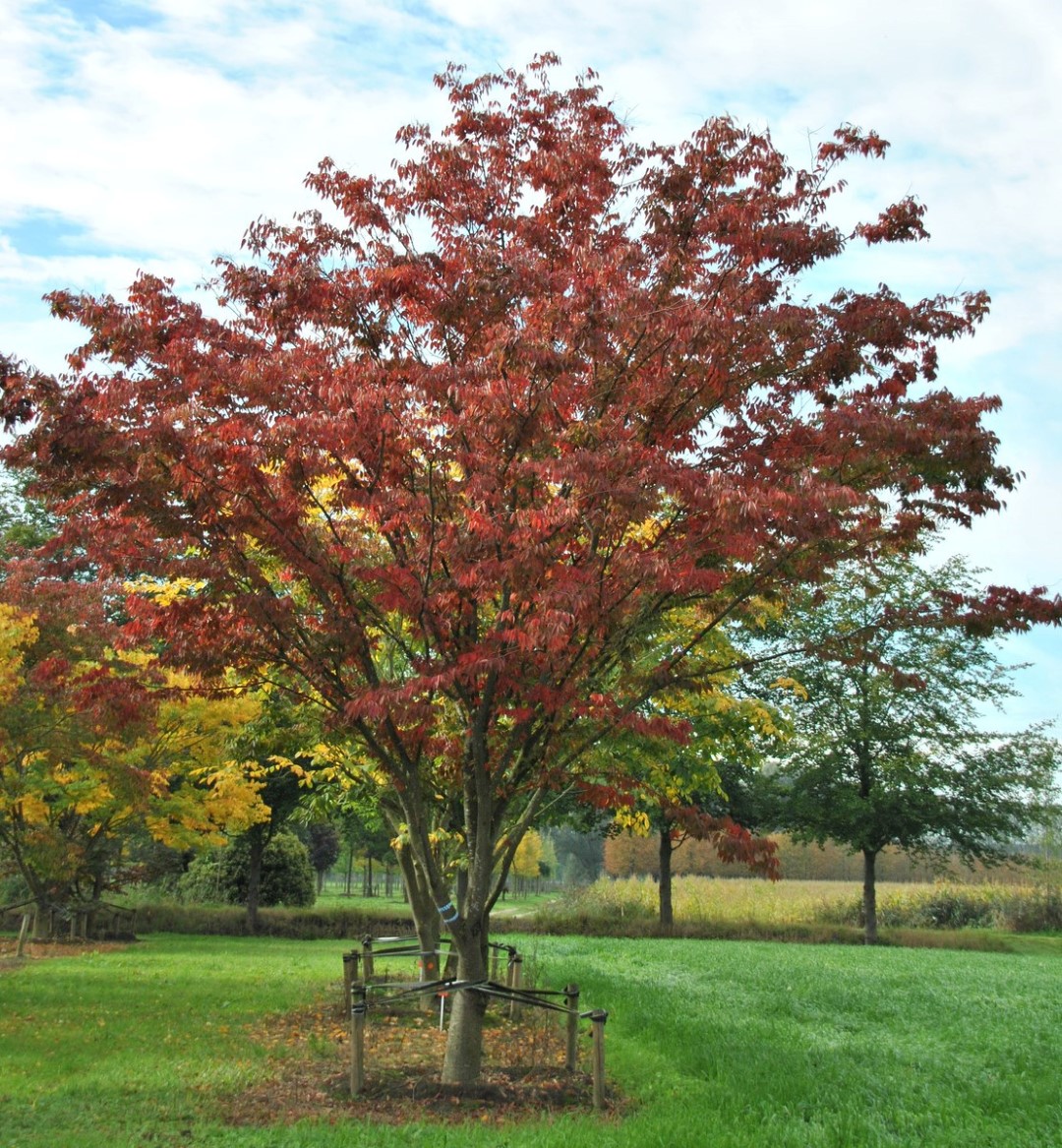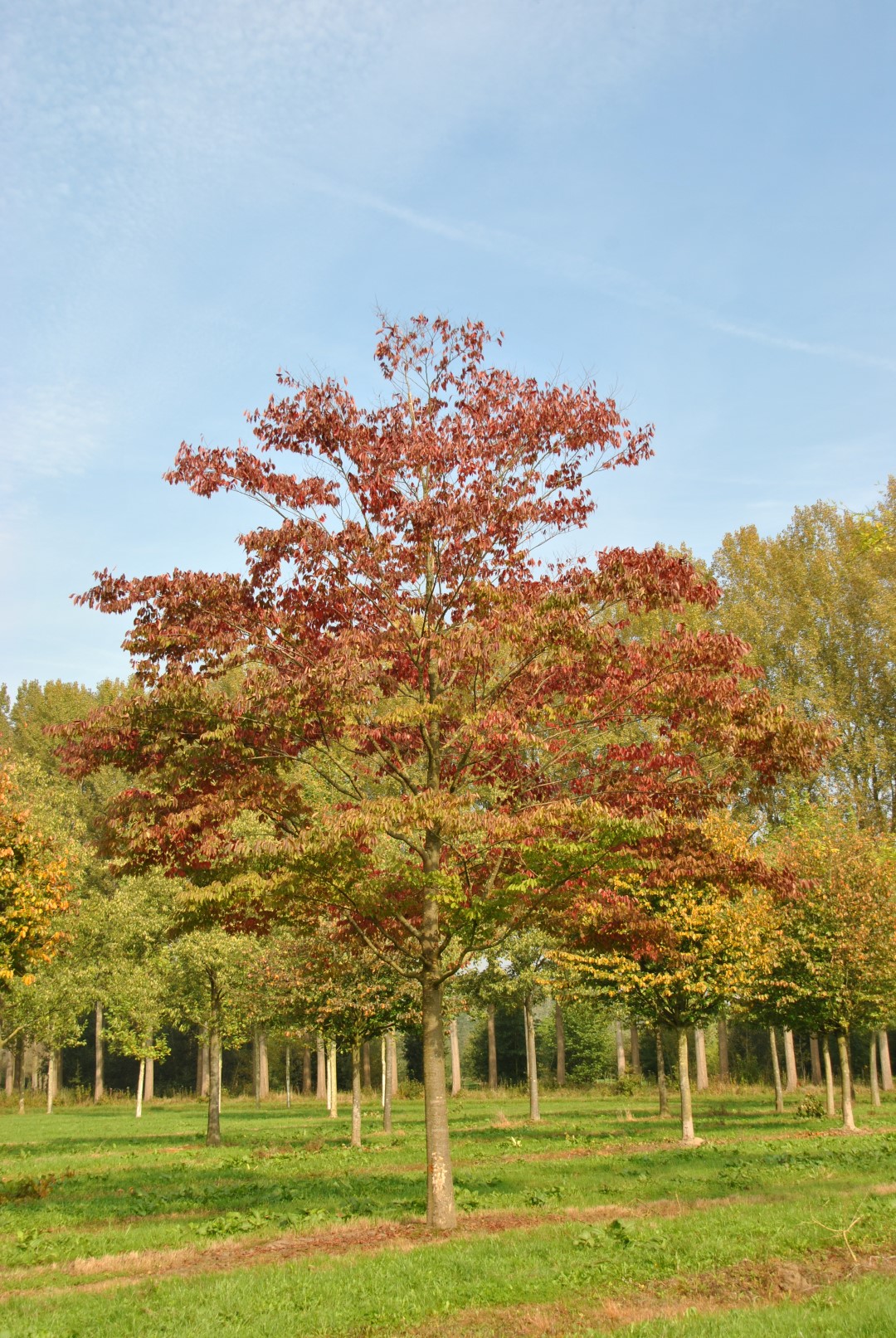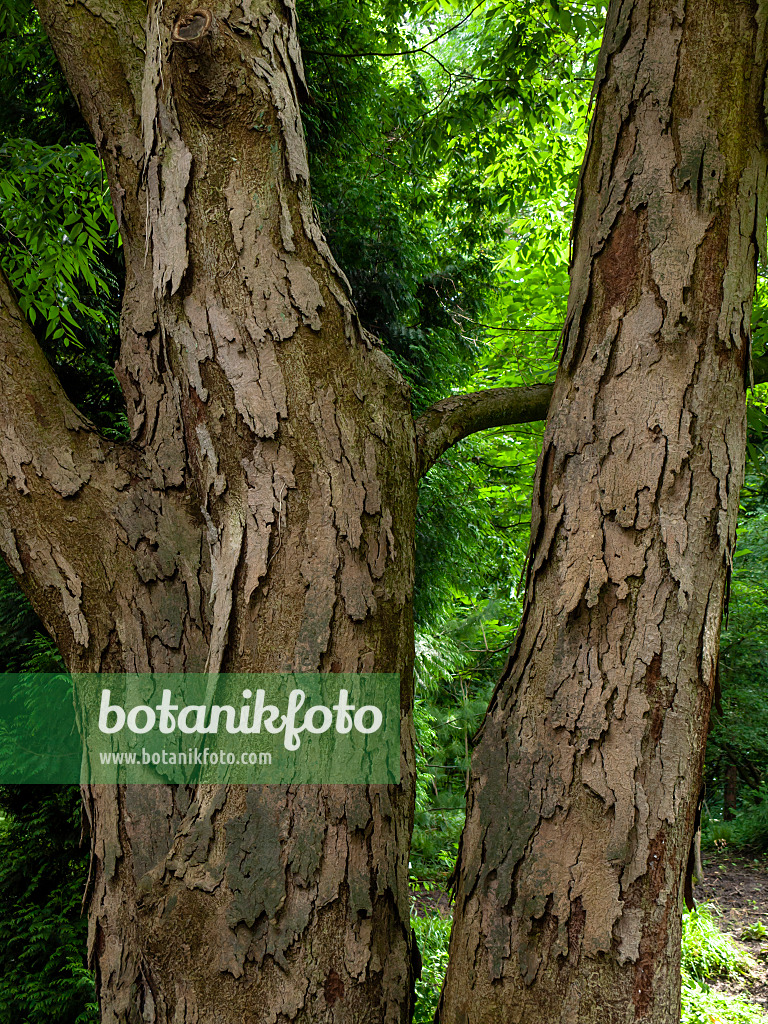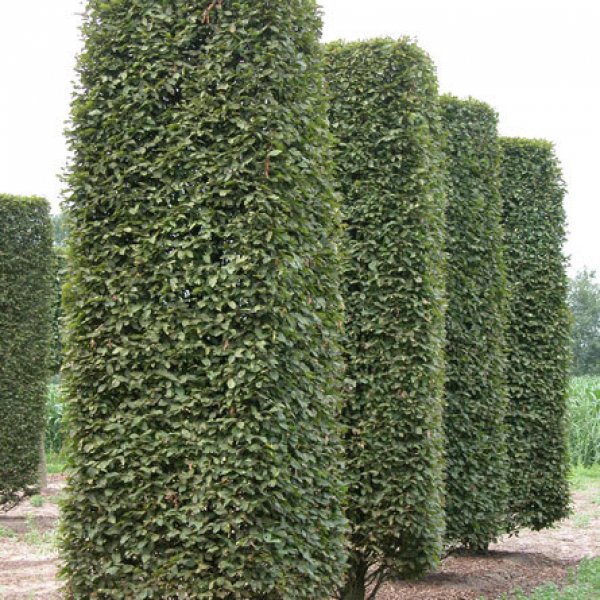
Zelkova serrata UDBG
The Zelkova serrata plant is a beautiful medium-to-large deciduous tree native to Eastern Asia. It was first brought to the United States in 1862. It has a significant tolerance against Dutch Elm disease and many types of insects, and is also known to be tolerant to pesky deer. It is a useful tree to grow in area that have air pollution.

Zelkova serrata Japanische Zelkova, Keakibaum Van den Berk Baumschulen
Height: 55 to 80 feet Spread: 50 to 75 feet Crown uniformity: symmetrical Crown shape: vase Crown density: moderate Growth rate: moderate Texture: fine Foliage Leaf arrangement: alternate (Fig. 3) Leaf type: simple Leaf margin: serrate Leaf shape: oblong, ovate Leaf venation: pinnate Leaf type and persistence: deciduous

Trees of Santa Cruz County Zelkova serrata Japanese Zelkova
The species name serrata is a nod to the small, toothed leaf margins. Speaking of, Japanese zelkova leaves are dark green, serrated, and oval-shaped, with tapered tips and a length of up to five inches. Come fall, the foliage color will change to shades of yellow, orange, or even reddish-brown.

Zelkova serrata Japanese Zelkova, Keaki Van den Berk Nurseries
Japanese Zelkova Scientific name: Zelkova serrata 'Wireless' Description Introduced by J. Frank Schmidt Nursery in Boring Oregon, this zelkova cultivar is touted as being an excellent choice for use beneath power lines as it attains height of 24' and a spread of 35'. Morphology:

Zelkova serrata Japanese Zelkova, Keaki Van den Berk Nurseries
Zelkova serrata 'Musashino' Musashino Japanese Zelkova. Family: Ulmaceae (Elm Family) 39; Genus: Zelkova (Zelkova Keaki) 6; Plant Type: Tree 580; Hardiness: USDA Zone 5. narrow, vase-shaped form with tight branching. Zelkova serrata has a beautiful wood grain for furniture, etc. Minor susceptibility to various elm diseases and pests, but.

Japanese zelkova (Zelkova serrata)
One of the contenders—used, for example, as a replacement species for elms along Boston's Commonwealth Avenue beginning in the 1950s—was the Japanese zelkova (Zelkova serrata), a tree closely related to the elms with a similar appearance. Though shorter in stature, zelkovas offer an elm-like form and the dense cover of beautiful, sawtooth.

Zelkova serrata (Japanese Zelkova) North Carolina Extension Gardener
Zelkova serrata, commonly called Japanese zelkova, is a medium to large deciduous tree, typically growing to 50-80' tall with a spreading, generally upward-branching, vase-shaped crown. It is native to Japan, Taiwan and eastern China. It is noted for its graceful shape, clean foliage, attractive bark and resistance to Dutch elm disease..

Keaki and Japanese Zelkova (Zelkova Serrata) Growing & Care Guide for
Aka Zelkova serrata or the keaki tree, Japanese zelkova is a tough, densely-growing, and adaptable deciduous tree from the Zelkova genus, which contains five other species of deciduous trees and shrubs.

Zelkova serrata PB18 (180/200)
Overview More Information Care Knowledge Cultivars Photo Gallery (5) Zelkova serrata (Japanese Zelkova), habit, spring; © The Morton Arboretum Zelkova serrata (Japanese Zelkova), leaf, spring; © The Morton Arboretum Zelkova serrata (Japanese Zelkova), bark, trunk; © The Morton Arboretum

Buy Japanese Zelkova (Zelkova Serrata) 100 seeds online Seeds
Ulmaceae. Native to the UK. No. Foliage. Deciduous. Genus. Zelkova are large deciduous trees or shrubs with neatly serrate, ovate leaves and inconspicuous flowers and fruit; good autumn colour. Name status. Correct.

Zelkova serrata landscape architect's pages
Renzo Del Castillo Zelkova bonsai plants are known for being resistant to many of the diseases that commonly harm other species. They are typically associated with the broom style. This portrays a deciduous tree that has not been influenced by environmental factors. Zelkova plants are native to China and Japan, and they are related to elm trees.

Pin on Shade Trees
Extremely hardy, versatile and low maintenance tree. Dark green foliage turns to shades of yellow, orange and red in autumn. The smooth, attractive gray bark peels with age. Under optimal conditions zelkova can grow 1-2′ (30-60cm) a year. Also referred to as Japanese zelkova.

Zelkova serrata (Japanese Zelkova) North Carolina Extension Gardener
Prized for its graceful shape, clean serrated foliage and attractive bark, award-winning Zelkova serrata (Japanese Zelkova) is a spreading deciduous tree with an upward-branching, vase-shaped crown. The foliage of neatly toothed, lance-shaped, mid-green leaves turns attractive shades of gold, dark red, or cinnamon in fall.

Image Japanese zelkova (Zelkova serrata) 427066 Images of Plants
Zelkova serrata ( Japanese zelkova, Japanese elm, [2] keyaki, or keaki; Japanese: 欅 (ケヤキ) keyaki /槻 (ツキ) tsuki; Chinese: 榉树/櫸樹 jǔshù; Korean: 느티나무 neutinamu) is a species of the genus Zelkova native to Japan, Korea, eastern China and Taiwan. [3] [4] It is often grown as an ornamental tree, and used in bonsai.

Buy Japanese Zelkova (Zelkova Serrata) 30+ seeds online Seeds
Height: 12.10 m Diameter at breast height: 0.27 m Bark The bark is typically grayish-brown/grayish-white and has lenticels. When there are exfoliated patches, the orange inner bark is revealed. Twigs & branches Its twigs are typically thin and have small, dark conical buds in zigzag patterns. The branches tend to be glabrous. Foilage

Zelkova
Native to (or naturalized in) Oregon: Broadleaf deciduous tree, 50-60 (80) ft [15-18 (24) m], vase-shaped, low branched. Bark smooth-gray initially. Leaves simple, alternate, ovate to oblong-ovate, 2.5-5 cm long (on some shoots to 13 cm long), sharply serrate with acuminate teeth, parallel veins, 8-14 vein pairs, dark green and somewhat rough.